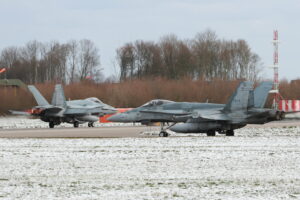
After two years of absence because of Covid, this year saw another edition of Dutch exercise Frisian Flag, the biggest of its kind in Europe. Although also this year it was unsure for a while whether the exercise could go on, but this time not because of a pandemic but because of the Russian invasion of the Ukraine followed by the still ongoing war there.
Because of this the Polish air force had to cancel their planned participation with MiG-29s and F-16s, and the German Luftwaffe decided not to move a dozen EF.2000s to Leeuwarden but fly only a few missions from home. This caused some doubt whether the remaining participants would be enough for the exercise to qualify as a ‘Flag’ exercise. However NATO deemed the exercise as very important, especially with the situation in the Ukraine, so Italy arranged some last minute participants as a replacement, the Dutch freed up two more F-16s and the British Royal Air Force assigned some Typhoons to participate from their homebase as well.
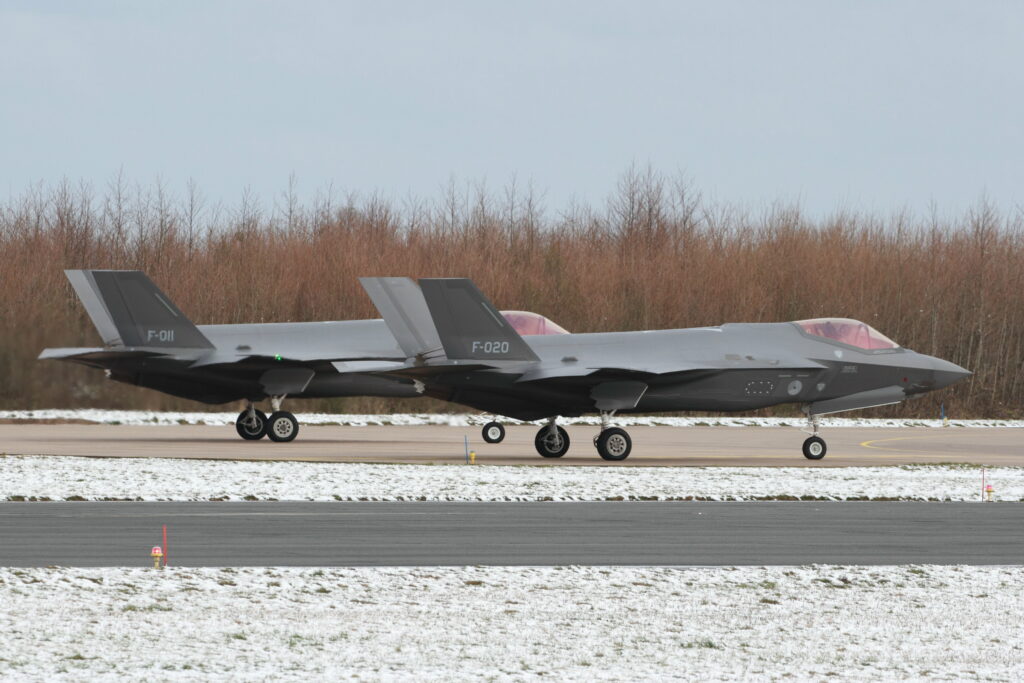
Next to the more regular participants this year’s edition saw the Royal Canadian Air Force participate for the first time. 433 squadron from Bagotville based 3 Wing sent 6 CF-188 Hornets to The Netherlands. Squadron commander Lt.Col. McLeod explained: “The Dutch air force invited the RCAF a few times already, but it was always too difficult to match the exercise with other operational obligations. A lot of resources are needed to support an exercise like this. However this time the exercise perfectly fit within the strategic training objectives and HQ approved our participation.”
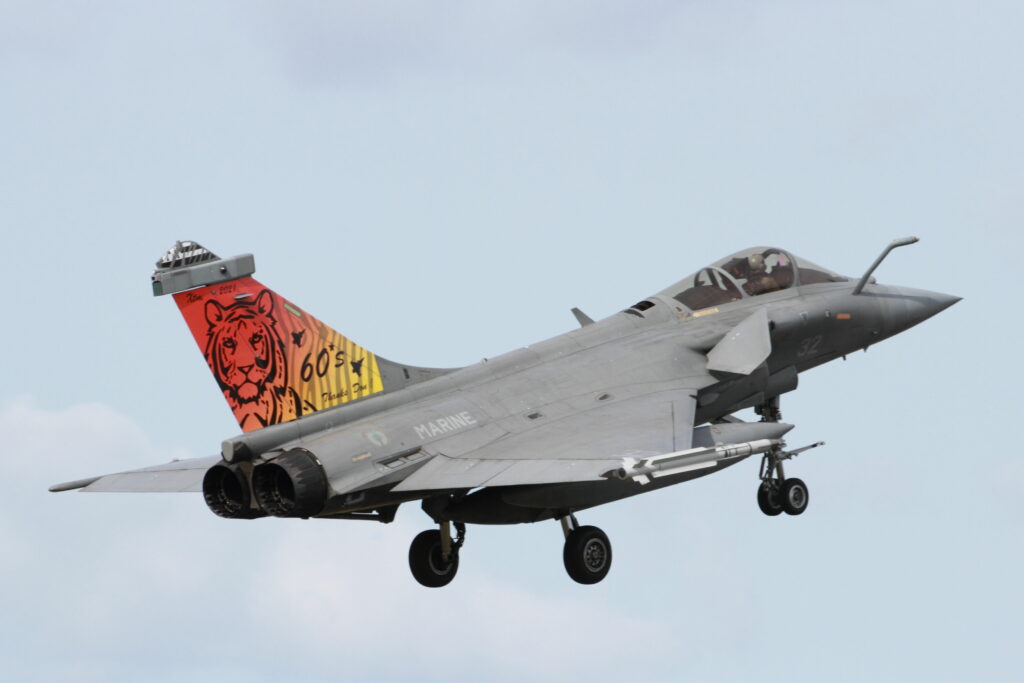
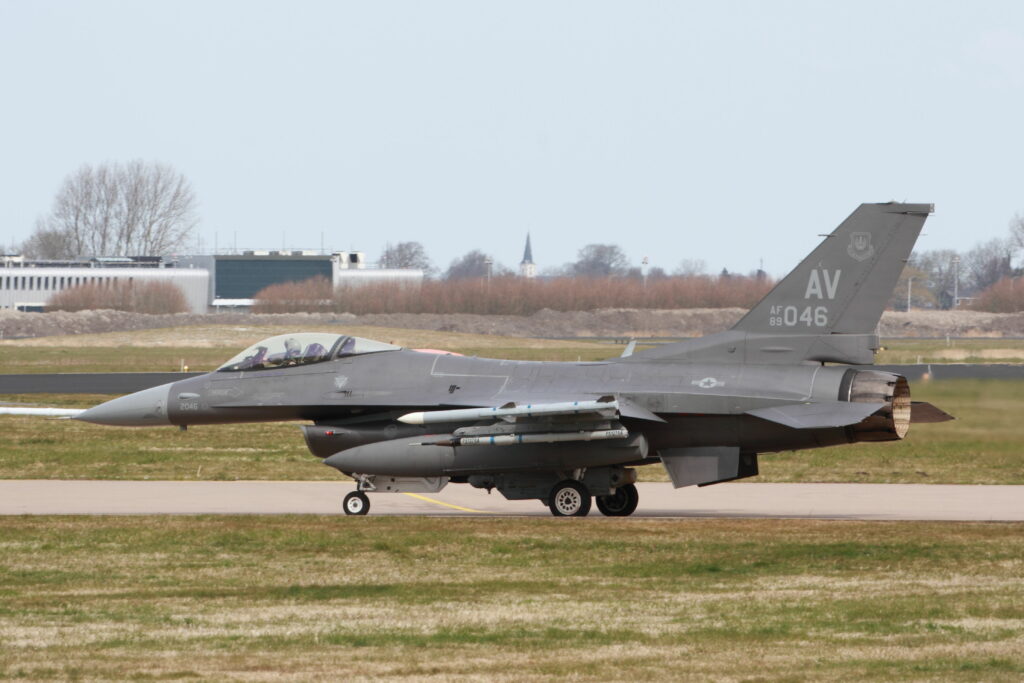
Unlike the last time 433 squadron moved to Europe, in the fall of 2020 to support the Air Policing Missions of NATO from Romania, this time there was no need for a ‘Covid bubble’. All participating pilots and ground crew had been vaccinated and tested before travelling to The Netherlands. There all Covid restrictions had just been lifted, giving everybody the unexpected chance to also enjoy the Dutch hospitality.
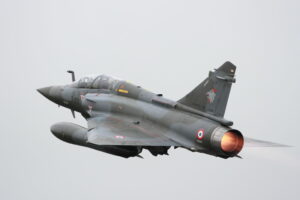
Of course this was still done with a bit of extra care, as it was important to keep everybody healthy and not endanger the participation of the exercise. “This was done on own responsibility” McLeod said. “People have taken it all very seriously. And the measures we took have effect.” Almost the full squadron was deployed for the exercise. About half of them were in Romania before, for the rest this was the first deployment to Europe.
Obviously the situation in the Ukraine not only forced some participants to change their plans, it also gave the exercise a completely different atmosphere. It made everybody realise again that, despite a relatively peaceful period of some decades in Europe, you can’t take peace for granted unfortunately. When asked about this Base Commander of Leeuwarden airbase Johan van Deventer said: “It makes us realise again how important it is to be well-trained. And how important it is to be one as NATO, and to be able to smoothly operate together.” This was confirmed by McLeod, who added: “It is also a big aim of this exercise to underline the relationship with our allies.”
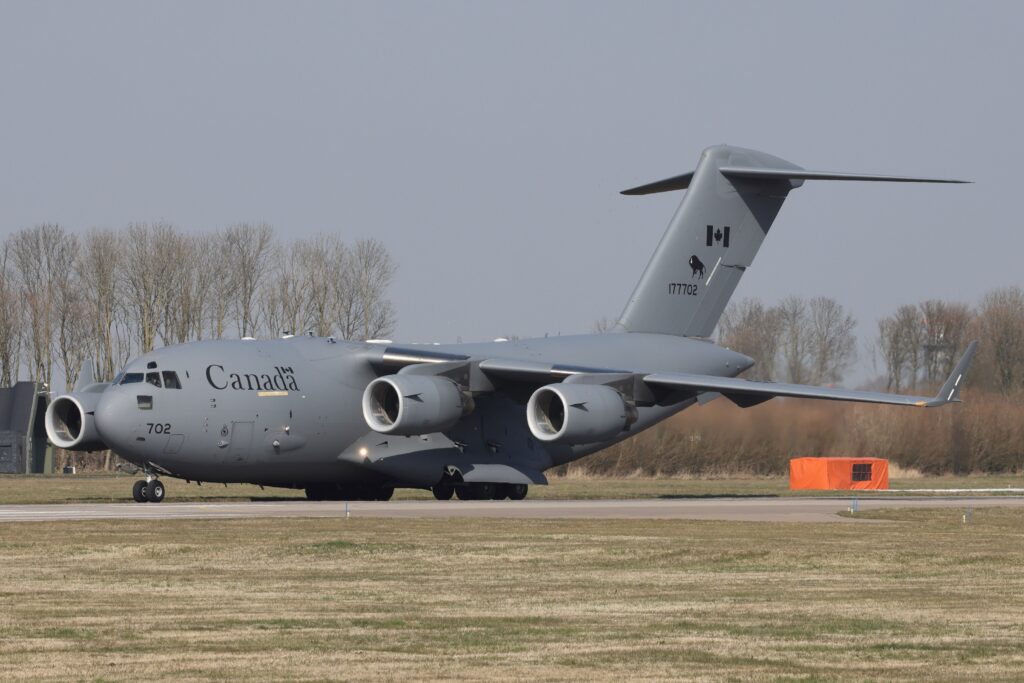
The main goal of Flag exercises, like this one, is to give young pilots the equivalent of their first combat missions, to improve their chances of survival in case of real war. “To get back to that [after the Covid period] is critically important” McLeod said. “It has been a huge eye opener for my pilots. Missions involve a number of aircraft they don’t usually see and there are some challenging scenarios.” Not only the younger pilots learn a lot from the exercise though, the more experienced pilots get to be mission commander for a day and benefit as well. The first week for the Canadians focus was on the defensive aspects as they were part of the Blue forces. This week started relatively simple but more complex threats were added quickly. As McLeod said: “You have to walk before you run”. The second week 433 squadron was part of the Red forces that were tasked with offensive missions.
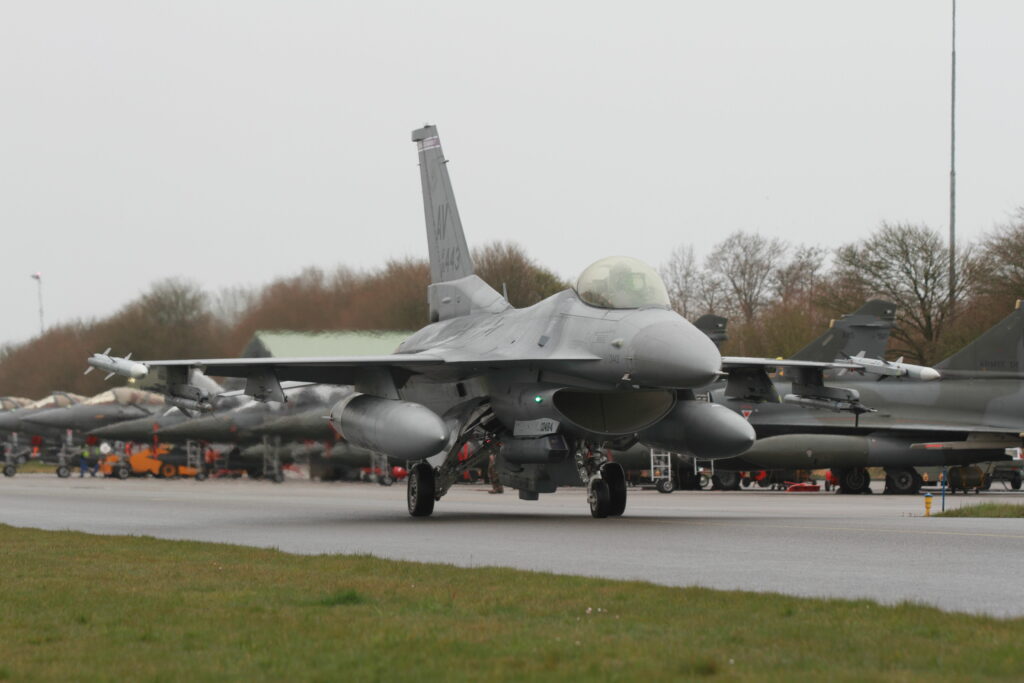
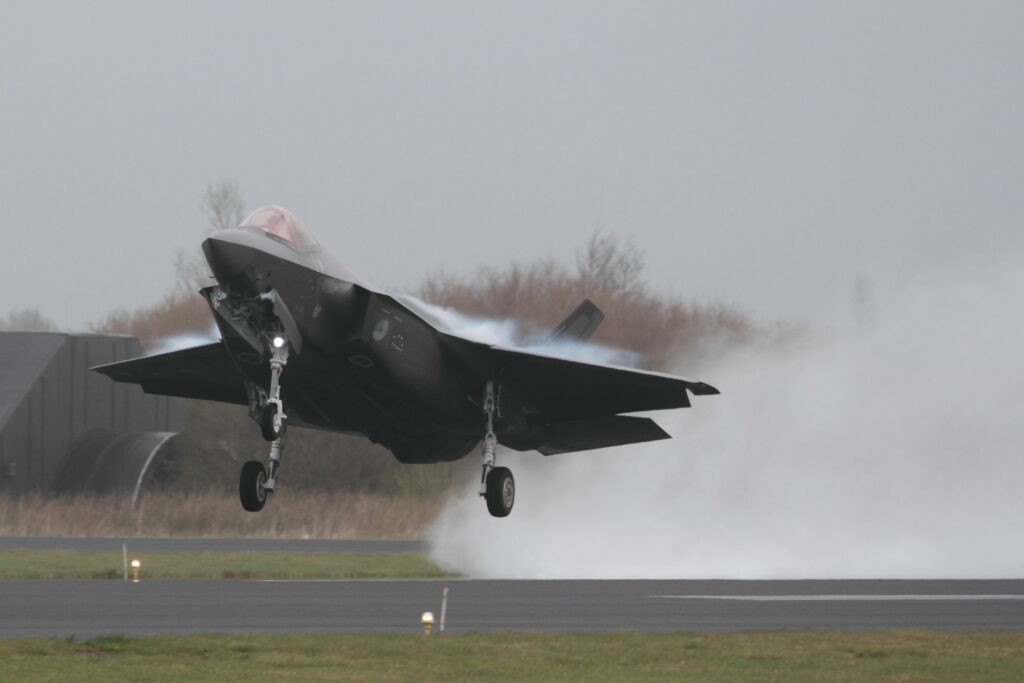
Usually Frisian Flag is combined with the European Air Refuelling Training (EART) exercise, which provides air-to-air refuelling. Because of the situation in the Ukraine EART was cancelled however, thus limiting the possibilities for longer missions. And not only the situation in the Ukraine influenced the exercise, also the weather played a role. Where all participants arrived at Leeuwarden in glorious summer weather, this quickly turned into autumn and even winter with rain, hail and some snow as well. However it was the wind that really caused problems, with one mission scaled down because of gales and four missions cancelled altogether. Luckily enough missions had been planned (two every day) to give all participating crews enough opportunities to fly and learn.
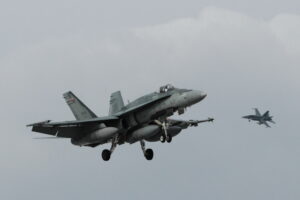
Major ‘Banger’, one of the more experienced pilots of 433 squadron, explained about lessons learned. “First there is deploying the whole squadron overseas, with all logistics. Then the missions are flown with fighters of different nations and generations. Integrating all this effectively is the biggest challenge. Furthermore you learn not to assume every aircraft you fly with has the same capabilities you have, both in good and bad ways.” Learning the capabilities of the 5th generation F-35 is one of the great benefits. The over 40 years old CF-188s had a Mid-Life Update in 2005-06 and are becoming obsolete. But one more upgrade is planned, called the Hornet Extension Project, which should form a bridge to the 5th generation fighter the RCAF will get soon. Banger continued “The more experienced pilots hang back a little bit. We really want the youngsters to learn, demonstrate their capabilities and build confidence!”
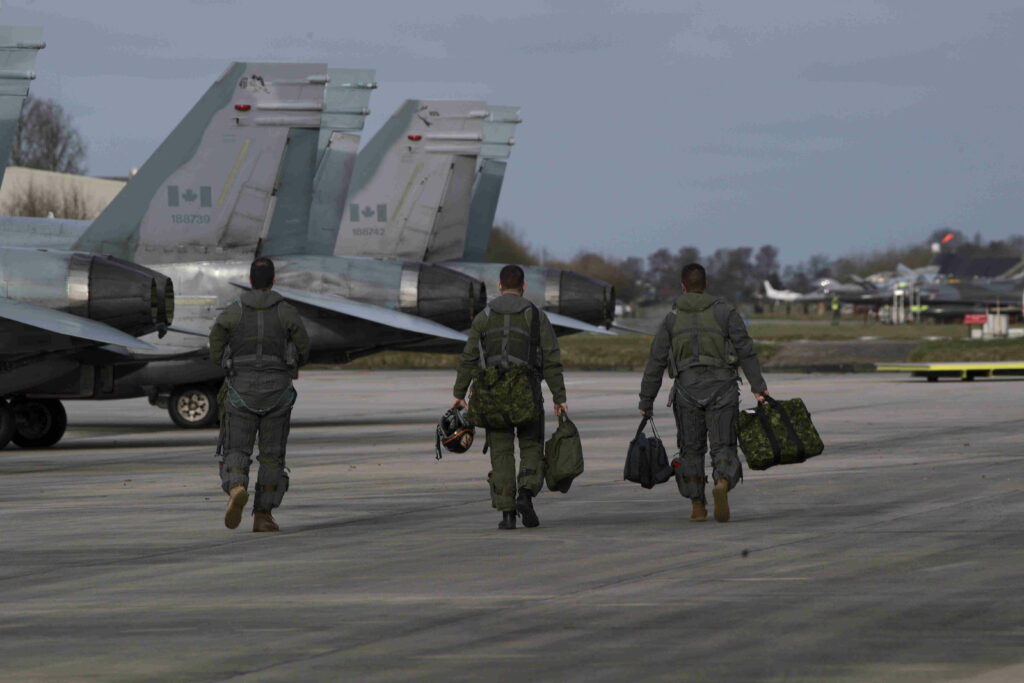
433 squadron used civil air tanker operator Omega to cross the ocean this time, meeting up with their DC-10 over New Brunswick. On the way back they were also supported by a CC-150 Polaris while a CC-130 Hercules followed the Hornets both ways for the rescue sweep. Also multiple support flights with another CC-130, a CC-177 and a CC-150 were made to transport all personnel (130 in total) plus all needed equipment to The Netherlands. Prestwick in Scotland was used as a hub, where three of the Hornets had to stay overnight because of technical problems. The Hornets are getting older obviously, but the ground crews managed to repair all three jets quickly. “Our technicians are the best of the best” McLeod complimented his people. The squadron was basically fully self-supporting, proving McLeod’s words by performing a full engine change on a Hornet in a few hours only days after arrival.
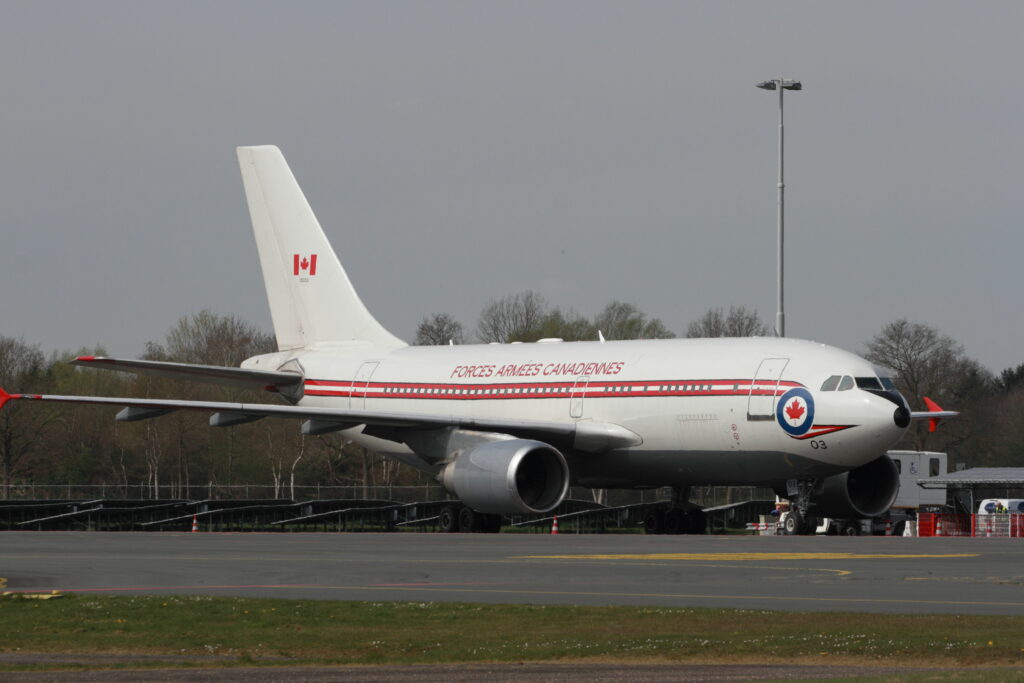
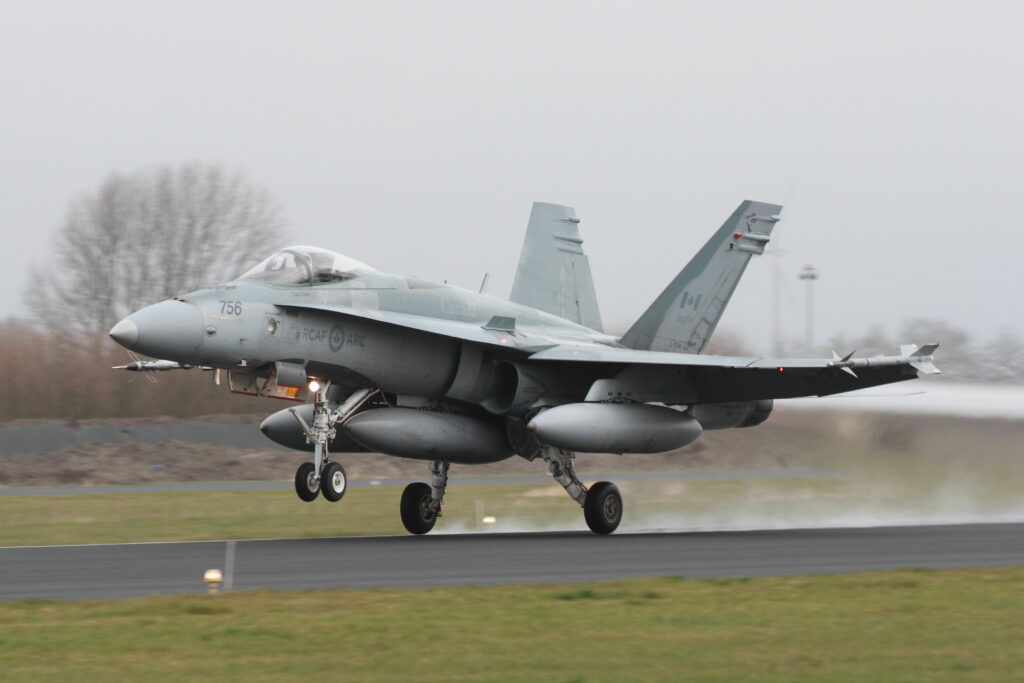
Originally it was planned that the Canadian delegation would stay at Leeuwarden for another week after Frisian Flag had ended to fly some local missions with the based Dutch F-35s, the fighter jet that will probably replace the Canadian CF-188s in due course. However the war in Eastern Europe prevented this. McLeod explained “We depend on the timing of available airlift. Obviously humanitarian aid and other operational obligations go first.” In the end all six Hornets started their journey back to Canada on the Tuesday after the exercise after doing a last sightseeing flight over The Netherlands. The rest of the staff and their equipment followed during the days immediately after, assuring everybody got home just before Easter.
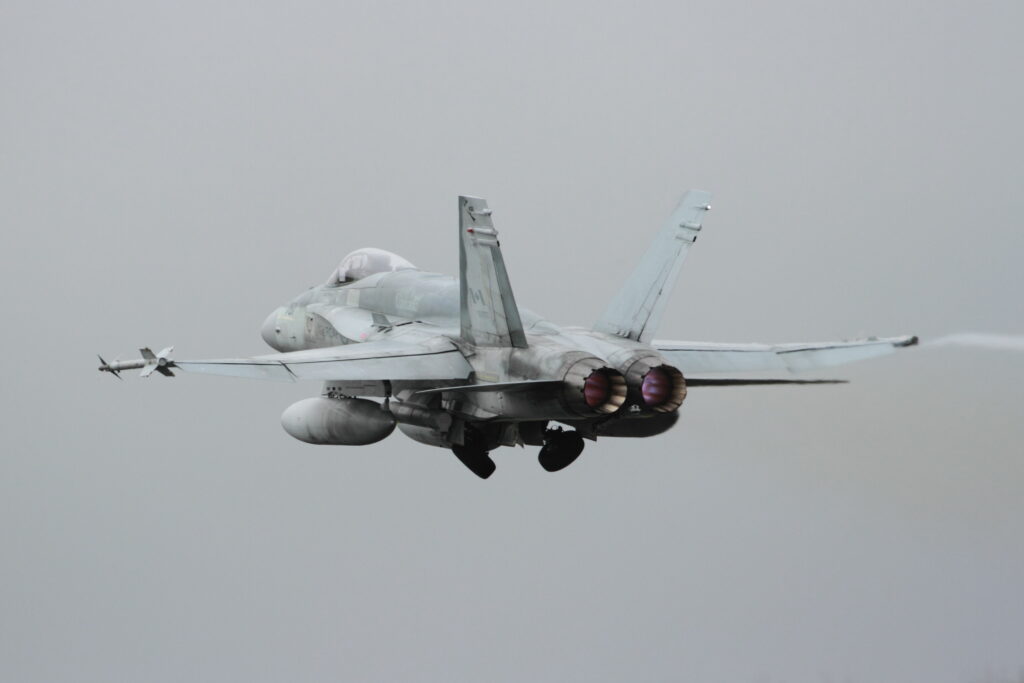
Many thanks to the Dutch and Canadian Air Forces for their cooperation!
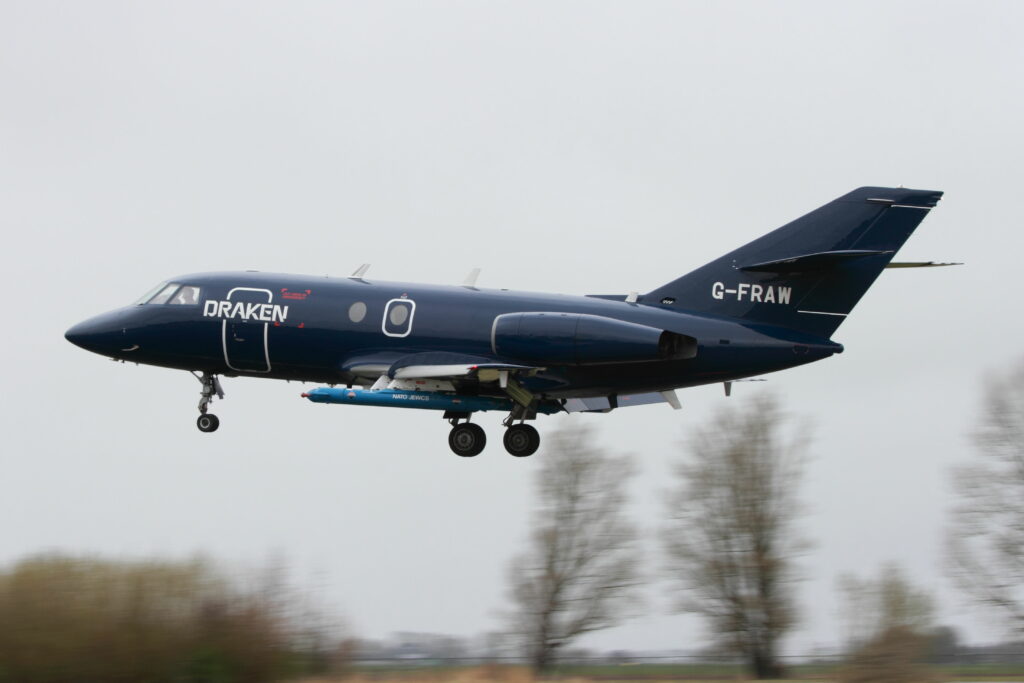
Also interesting was the participating Falcon 20 of Draken Intl. This aircraft operates as part of NATO Joint Electronic Warfare Core Staff (JEWCS). Not only is this the only civilian aircraft taking part in Frisian Flag, flying dedicated electronic warfare missions, more noteworthy is the fact that this Falcon started life as CC-117 for the Royal Canadian Air Force in the ‘60s. After serving there for some 25 years it got a second life in the EW business with FRAviation and later Draken.
This article was published in Aviation News Journal, see here.
